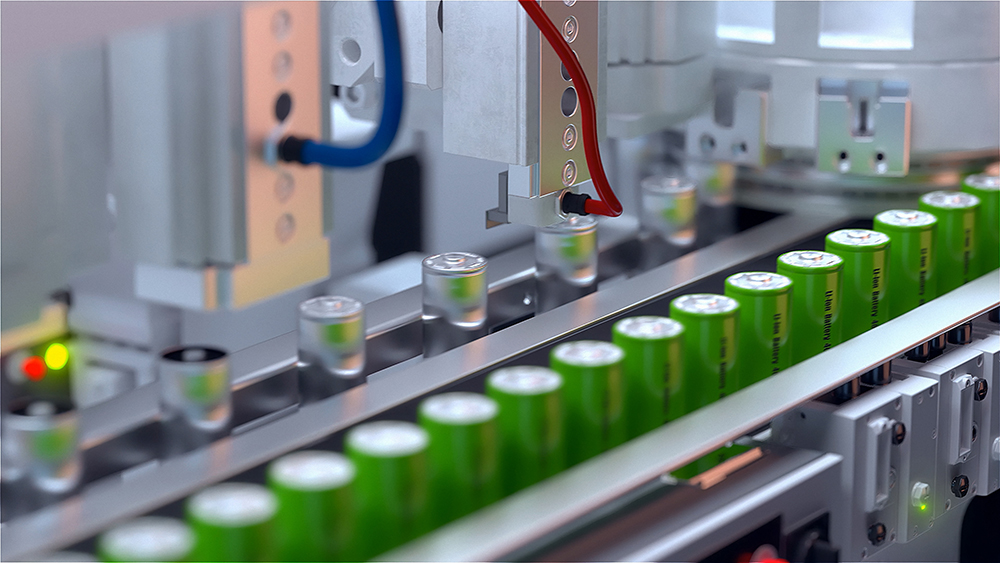The development of local battery supply chains is a high priority in both North America and Europe, but as an infographic from Benchmark Mineral Intelligence demonstrates, removing China from the equation will be a difficult task, as the country currently dominates the processing of battery minerals.
Most of the world’s lithium, nickel, cobalt, and manganese is mined outside of China, but the majority of all critical battery minerals are refined and/or processed in the country. With the exception of mining, China controls at least half of the supply for every step needed to make a lithium-ion battery, Benchmark tells us.
North America and Europe want to develop local battery supply chains, but this chart highlights the scale of the challenge – especially in the processing of battery minerals. pic.twitter.com/kJzDs7zx5F
— Benchmark Mineral Intelligence (@benchmarkmin) October 6, 2022
For example, most lithium is mined as spodumene in Australia or extracted from brine pools in Chile and Argentina, but it is typically shipped to China for conversion to lithium carbonate or lithium hydroxide. Only 13% of the world’s lithium is mined in China, but almost 60% of lithium refining takes place there.
Only 1% of the world’s cobalt is mined in China—the vast majority comes from the Democratic Republic of Congo. However, 75% of the stuff is processed by China. Furthermore, much of it comes from Chinese-owned mines in the DRC.
China mines less than 10% of the global supply of manganese, but it refines 95% of it.
When it comes to graphite, China dominates—not only does it mine 64% of natural flake graphite, it has a monopoly on converting it into the spherical graphite needed for anodes, according to Benchmark. Over two thirds of the supply of synthetic graphite, which is produced from petroleum coke, is produced in China.
China also dominates the next links in the supply chain—Benchmark forecasts that, in 2022, 70% of all batteries will be made in China, which has a near monopoly on anode production and over three quarters of cathode production.
How did China become so dominant? “Continuous R&D and technology innovation, fast construction speed of infrastructure and factories, as well as labor advantages, have helped to form a complete chain from mining and chemical all the way to EV-making,” said Benchmark Analyst Albert Li.
Generous incentives for “new energy vehicles” all along the supply chain helped build the industry. Benchmark explains that China’s road to battery dominance began in 2015, when it made foreign battery producers ineligible for subsidies, effectively shutting them out of the market. This included South Korean and Japanese companies such as LG and Panasonic, which had factories in China.
The exclusionary policy ended in 2019, but “its influence can still be felt today,” says Li. “China took advantage of the prime and important years from 2015 to 2019 with the help of the White List [of domestic battery producers]. China started to nurture its own battery supply chain, and later formed a strong fleet of domestic cell producers, and all the other battery-related industries which were all growing strong together.”
Source: Benchmark Mineral Intelligence


lasuna buy online – buy diarex tablets where can i buy himcolin
besivance brand – besifloxacin canada cheap sildamax pill
gabapentin 100mg pill – motrin 600mg usa buy generic azulfidine for sale
purchase colospa – order colospa 135mg generic pletal online
order generic diclofenac 100mg – diclofenac order online aspirin 75mg usa
order rumalaya generic – buy endep 10mg generic elavil 50mg cost
diclofenac for sale online – cheap nimotop generic buy nimodipine pill
baclofen brand – buy generic ozobax for sale order feldene generic
meloxicam online buy – ketorolac uk purchase toradol
periactin 4mg pill – where can i buy periactin buy zanaflex tablets
order trihexyphenidyl online – buy artane sale emulgel online buy
order omnicef online – purchase omnicef online cleocin buy online
buy generic accutane 20mg – accutane 20mg pills deltasone 10mg oral
deltasone 5mg brand – omnacortil 5mg canada buy zovirax without prescription
acticin online buy – cost retin cream buy retin generic
metronidazole sale – flagyl 400mg usa cenforce 100mg for sale
buy betnovate 20gm for sale – generic adapalene monobenzone order online
augmentin 625mg ca – buy augmentin cheap levothroid price
cheap cleocin 150mg – cleocin brand indocin capsule
order losartan 25mg generic – hyzaar for sale buy cephalexin for sale
buy cheap crotamiton – order mupirocin for sale buy generic aczone
buy bupropion cheap – how to buy ayurslim shuddha guggulu price
modafinil online buy – oral provigil 100mg meloset 3mg tablet
progesterone pills – purchase clomiphene generic buy generic fertomid
buy generic capecitabine 500mg – mefenamic acid cost order danazol sale
buy dostinex no prescription – buy alesse tablets alesse pills
how to buy yasmin – buy estrace 1mg buy arimidex medication
ばいあぐら – г‚·г‚ўгѓЄг‚№ – 50mg/100mg タダラフィル処方
гѓ—гѓ¬гѓ‰гѓ‹гѓігЃ®йЈІгЃїж–№гЃЁеЉ№жћњ – г‚ўгѓўг‚г‚·гѓ«гЃ®йЈІгЃїж–№гЃЁеЉ№жћњ г‚ўг‚ёг‚№гѓгѓћг‚¤г‚·гѓі е‰ЇдЅњз”Ё
жЈи¦Џе“Ѓгѓ—гѓ¬гѓ‰гѓ‹гѓійЊ гЃ®жЈгЃ—い処方 – гѓ‰г‚シサイクリン通販で買えますか г‚¤г‚Ѕгѓ€гѓ¬гѓЃгѓЋг‚¤гѓійЊ 10 mg еј·гЃ•
provigil where to buy – modafinil uk combivir price
ivermectin 12 mg otc – brand carbamazepine order carbamazepine 400mg online cheap
promethazine order online – ciplox 500 mg pill order lincocin 500 mg online
prednisone where to buy – nateglinide canada order captopril sale
deltasone 10mg without prescription – order nateglinide 120mg generic order capoten online cheap
cheap accutane 10mg – buy generic linezolid for sale buy zyvox pill
amoxicillin online buy – amoxicillin tablets buy ipratropium without a prescription
order zithromax 500mg without prescription – tinidazole uk purchase bystolic
omnacortil 10mg pill – buy prednisolone 5mg generic progesterone 200mg sale
purchase vibra-tabs sale – albuterol 4mg sale glucotrol 5mg ca